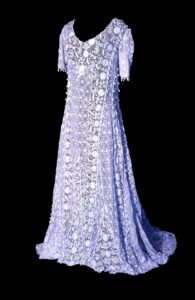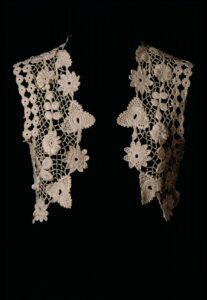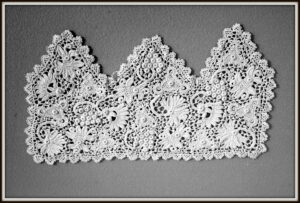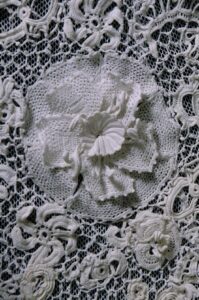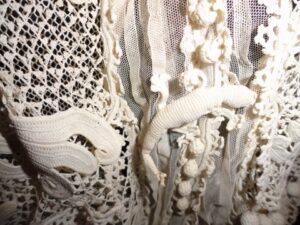Origin of Irish crochet
What we know today as ‘Irish crochet’ was developed during the potato famines as a way for women to supplement the family income. Many families in Ireland lived on small crofts growing their own food, largely at subsistence level. Their main staple was potatoes. Grain (cereal) crops were grown, but were too expensive for most people to buy. When the potato blight swept across the country between 1845 and 1851 and destroyed the crop, very few had cash reserves to go and buy alternative food. The need for work was recognised by, among others, the Ursuline sisters (nuns) who taught many girls and women work they could do in their own homes.
The motifs copied those seen in Venetian lace, brought over from France by the nuns. Crochet was a quicker and therefore cheaper way of producing lace. Families specialised in particular motifs, keeping the details of how to make them so secret that many were lost.
The crochet schools established in the 1850s and 1860s went into decline and fashions changed. However there was a revival from about 1880 to 1910, and most of the Irish crochet we know today dates from this period.
The Guild has a number of Irish Crochet items including dresses, an evening jacket, cuffs, collars, jabots.

